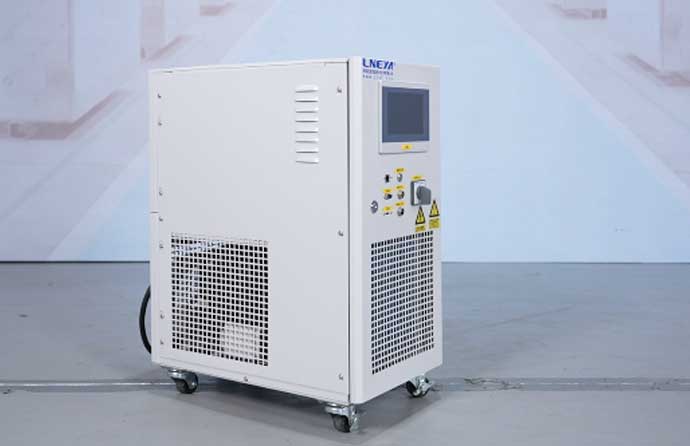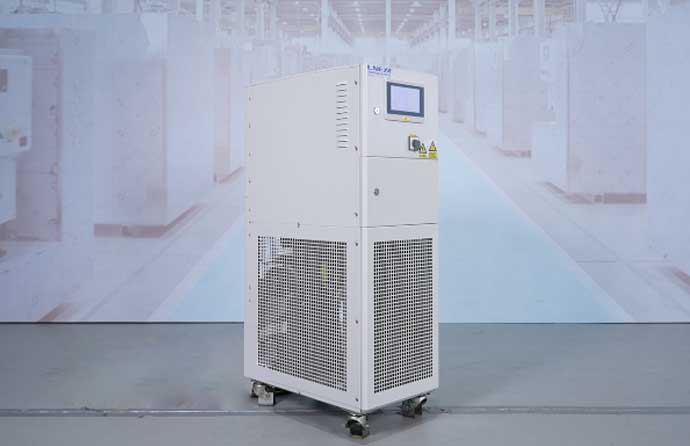What are the Low GWP Refrigerants in Semiconductor Chillers

- Compression Chillers vs Absorption Chillers Key Differences Efficiency and Applications
- What Are the Common Types of Chiller Compressors
- Hidden Costs of Chillers Quotes
- Industrial Chiller vs Industrial Freezer
- What Are Water-Cooled Condensers
- Custom Chiller vs Standard Chiller
- Qu'est-ce qu'un refroidisseur à air ?
- Qu'est-ce qu'un refroidisseur à eau ?
- août 2025
- juillet 2025
- juin 2025
- mai 2025
- mars 2025
- février 2025
- janvier 2025
- décembre 2024
- novembre 2024
- octobre 2024
- septembre 2024
- août 2024
- juillet 2024
- juin 2024
- mai 2024
- avril 2024
- mars 2024
- février 2024
- septembre 2023
- juillet 2023
- juin 2023
- mai 2023
- janvier 2023
refroidisseur à air refroidisseur Installation d'un refroidisseur refroidisseurs Assemblage froid Congélateur refroidisseur d'eau refroidissement chauffage circulateur système de refroidissement et de chauffage système de refroidissement Réacteur en verre double couche système de contrôle dynamique de la température congélateur refroidisseur de gaz circulateur de chauffage refroidisseur industriel refroidissement industriel congélateur industriel réfrigérateur industriel réacteur à double enveloppe refroidisseur de liquide refroidisseur à basse température nouvelles refroidisseur pharmaceutique refroidisseur de processus refroidisseur de réacteur refroidissement du réacteur refroidissement du réacteur chauffage chauffage du réacteur refroidissement système de réacteur circulateur réfrigéré refroidisseur de réfrigération refroidisseur à vis refroidisseur de semi-conducteurs refroidisseur pour tests de semi-conducteurs sundi tcu contrôle de la température chambre de test thermostat refroidisseur à ultra basse température refroidisseur pour essais de véhicules refroidisseur d'eau refroidisseur à eau wtd
In a semiconductor fab, temperature control matters. Tiny shifts can ruin a wafer or stall a test. That is why chiller choice matters as much as pump size or filtration.
Today, many fabs and test labs push for low GWP refrigerants in their semiconductor chiller systems. They want lower carbon impact and tighter future-proofing. This article walks through what “low GWP” means, why it matters, and the refrigerant options you’ll actually see on spec sheets and price lists.
What is a Low GWP Refrigerant?
GWP stands for Global Warming Potential. It measures how much heat a gas traps over a set time compared to carbon dioxide. CO₂ has a GWP of 1. Lower numbers mean less climate impact. “Low GWP” usually means a big drop from older HFCs like R-134a or R-410A.
The industry often targets numbers in the single digits to the low hundreds. Standards and rules from bodies like ASHRAE and regulators frame what counts as low or acceptable in different markets.
Why Low GWP Refrigerants Matter for Semiconductor Chillers?
• Regulations
Rules in the U.S., EU, and other regions push HFC phase-downs. That changes what you can buy and what you can retrofit.
• Fab visibility
Buyers now factor life-cycle carbon into procurement. That affects TCO.
• Upply risk
High-GWP refrigerants face tighter quotas and higher prices over time.
• Brand and customer pressure
OEMs and end users want eco-friendly refrigerant options in specs.
These forces make low GWP choices more than a green checkbox. They change long-term operations and retrofit plans.
Low GWP Refrigerants in Semiconductor Chillers
Below are the refrigerants most relevant to semiconductor chillers today. We describe where they fit, what to watch for, and why OEMs pick them.
R-1233zd(E)
As an HFO with ultra-low GWP, it targets low-pressure, large centrifugal chillers. R-1233zd(E) replaces older low-pressure fluids while keeping similar compressor design and nonflammable safety.
For fabs that use large central chillers, this fluid lets you hit very low GWP numbers without switching to high-pressure CO₂ or toxic ammonia. On the spec sheet you’ll see claims of a GWP near single digits and near-drop-in capacity for centrifugal machines. If you run a big chill plant, this is one of the most practical low-GWP options.


R-1234ze and R-1234yf
They are HFOs with very low GWPs and appear in both water-cooled and refroidisseurs à air. They offer good energy performance and a very low climate impact. However, they are mildly flammable (A2L class) and require careful handling.
You will find R-1234ze in many OEM product lines as the “new R-134a” for new equipment. For mid-sized semiconductor chillers, these fluids balance safety, efficiency, and low GWP well.
R-513A (Opteon XP10)
It is a blend designed to replace R-134a with less disruption. It is nonflammable (A1), closely matches capacity and oil compatibility, and cuts GWP substantially versus R-134a.
That makes R-513A a realistic choice when you want lower GWP without a full system redesign. Many chillers listed for data center and lab use offer R-513A as a factory option or an aftermarket path.
R-515B and similar OEM blends
OEM-developed blends designed to stay nonflammable, cut GWP, and deliver performance close to older refrigerants.R-515B, for example, has been used in commercial chillers to give a practical low-GWP option for new equipment.
These blends often come with OEM validation, so they can simplify warranty and service conversations. Still, they are new and buyers should review OEM guidance and parts compatibility.
Natural refrigerants: CO₂ (R-744) and ammonia (R-717)
CO₂ carries a GWP of 1 and operates effectively in both cascade and transcritical setups.It pushes high pressure. That means different compressors and safety measures. Ammonia has GWP 0 and excellent thermodynamics. But it is toxic. Certain fabs apply ammonia in big central systems, but only with strict zoning and skilled technicians in place.
Both are “true” low-GWP choices. But they require a different site approach than typical HFO or HFC chillers.

Emerging A2L refrigerants: R-32, R-454B and others
R-32 and R-454B have much lower GWPs than older HFCs. They are mildly flammable (A2L). The market is moving toward them in split systems and some packaged equipment.
For semiconductor chillers, their use depends on charge size limits, local codes, and OEM approvals. If you consider A2L refrigerants, plan for updated leak detection, ventilation, and service training.
How to Select a Low GWP Refrigerant for a Semiconductor Chiller?
• Match the refrigeration cycle
Centrifugal chillers prefer low-pressure fluids like R-1233zd(E). Screw and scroll chillers often take HFO blends.
• Mind safety class
A1 is nonflammable. A2L is mildly flammable. Your plant policy and local code will shape viable options.
• Check OEM approvals
Only use refrigerants listed by the chiller maker for that model. That protects warranty and ensures controls and components work.
• Consider retrofit pain
Retrofits can save capital but may need oil changes, component swaps, and re-rating. Some blends like R-513A are easier to drop into existing systems.
• Factor total cost of ownership
Include energy, refrigerant price and availability, expected regulatory changes, and service needs. A low-GWP fluid that raises energy use could cost more over its life.
• Plan for safety upgrades
New refrigerants often require better leak detection, updated ventilation, and technician training. Treat this as part of the project cost.
Send Us Your Cooling or Heating Requirements
If you’re evaluating refroidisseurs for a fab, send us your cooling or heating requirements, and LNEYA will help map temperature control solutions to your application and operations.
Refroidisseurs associés
CONTACTEZ-NOUS
TEL:
EMAIL:
WeChat et WhatsApp:

Wechat QR

Vous avez une question ou besoin d'un devis ? Remplissez le formulaire ci-dessous et notre équipe vous répondra sous 24 heures.
 LNEYA Industrial Chillers Fabricant Fournisseur
LNEYA Industrial Chillers Fabricant Fournisseur
















